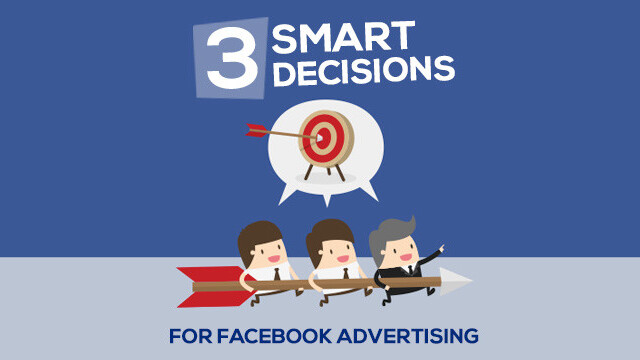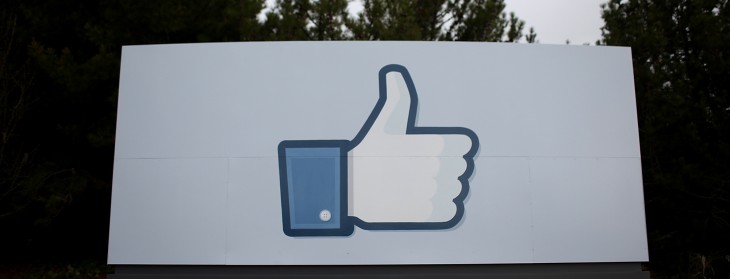
Brian Honigman is a marketing consultant, a professional speaker and freelance writer. This post originally appeared on the Adknowledge blog.
The most common issue businesses face when trying to advertise on Facebook is not being properly prepared from the very beginning.
Before your organization pulls the trigger on a Facebook ad spend, and way before working with a social advertising partner, it’s essential that your team understands your company’s ongoing objectives.
Facebook is a powerful advertising platform for advertisers to reach highly targeted customers at scale at various points through the conversion funnel.
For advertisers, the Facebook platform offers a variety of tools, ad units and targeting features to meet business goals.
“The businesses that work well on Facebook already know what they want to achieve. They know what they’re looking for and they know what their goals are,” said Gareth Smith, director of ad operations at AdParlor.
Before deciding to advertise on Facebook, decide upon your objectives, understand how to adapt your messaging and choose where you’d like to reach users in the conversion funnel.
1. Establish objectives from the start
The goals your organization is looking to achieve on Facebook will guide the choice of certain features and tool sets over others.
“The way Facebook is structured is by objectives,” Smith said. “A lot of advertisers don’t know how to use these tools because they don’t actually know what they want to achieve.”
For example, if your organization’s goal is to increase engagement with your Facebook posts, then the tool sets used would be entirely different if you were trying to increase the number of mobile app downloads on Facebook.
Establish what your organization’s objectives are on Facebook as they relate to your vertical. Once you’ve chosen the goals you’d like to work toward, it’ll become easier to apply the right ad units, calls-to-action, bidding structure, targeting features and tools to apply to your campaigns.
2. Define your approach based on your business structure
“As a marketer, you know your business really well and you best understand what you came to Facebook to achieve,” Smith said.
Since that’s the case, define how your business will approach the Facebook audience based on whether your business is conducted online, offline or both.
All of your Facebook campaigns have an objective, but where your customers interact with your organization and make purchases will greatly affect your campaigns.
For example, if Amazon were to advertise on Facebook, it would likely focus its efforts on driving engagement and sales to its online store from the campaigns.
On the other hand, Taco Bell doesn’t sell anything online, which would change its Facebook focus to driving engagement with its online content or mobile app—not to mention driving foot traffic to their restaurants, as well.
Before deciding to start a paid advertising campaign, understand how your company will best define your approach to reaching your audience on Facebook as it relates to the unique structure of your business.
3. Choose where to target customers across the funnel
“The beauty of Facebook, as compared to advertising on Google, is that it allows marketers to reach users at all levels of the funnel,” Gareth Smith said.

The environment on Facebook allows users to perform many types of actions on the network and therefore, allows for businesses to advertise against the variety of activities happening throughout the conversion funnel on this channel.
The robust audience targeting capabilities help Facebook stand out over other advertising channels (like search) that only allow businesses to target users at the end of the funnel.
These targeting features allow you to reach consumers as they become aware of your business, when they’re close to making a purchase, and anywhere in between.
If you’re solely looking to gain more visibility and brand awareness, then using Facebook ads to reach users at the top-of-the-funnel is most aligned with your objectives.
If your goal is to re-engage recent visitors to your website, then it’s important to serve ads to bottom-of-the-funnel users who are most likely to make a purchase.
It’s essential that your ads reach a Facebook user at the right part of the funnel because the messaging, targeting and ad unit should be catered to the unique preferences of that specific demographic.
Not to mention, how you’re paying for these ads is directly related to your where you’re targeting users in the funnel and the objectives you’re trying to achieve with your Facebook advertising.
From the very beginning, it’s important for your team to decide which parts of the funnel your Facebook advertising campaigns will target to drive the best results for your business.
Has your business prepared appropriately before deciding to advertise on Facebook? What decisions did you make before deciding to advertise on the social network? What mistakes would you suggest others avoid with their Facebook advertising strategy? Share your thoughts in the comments below.
Read next: The beginner’s guide to Facebook ads for startups, small businesses and non-profits
Get the TNW newsletter
Get the most important tech news in your inbox each week.





